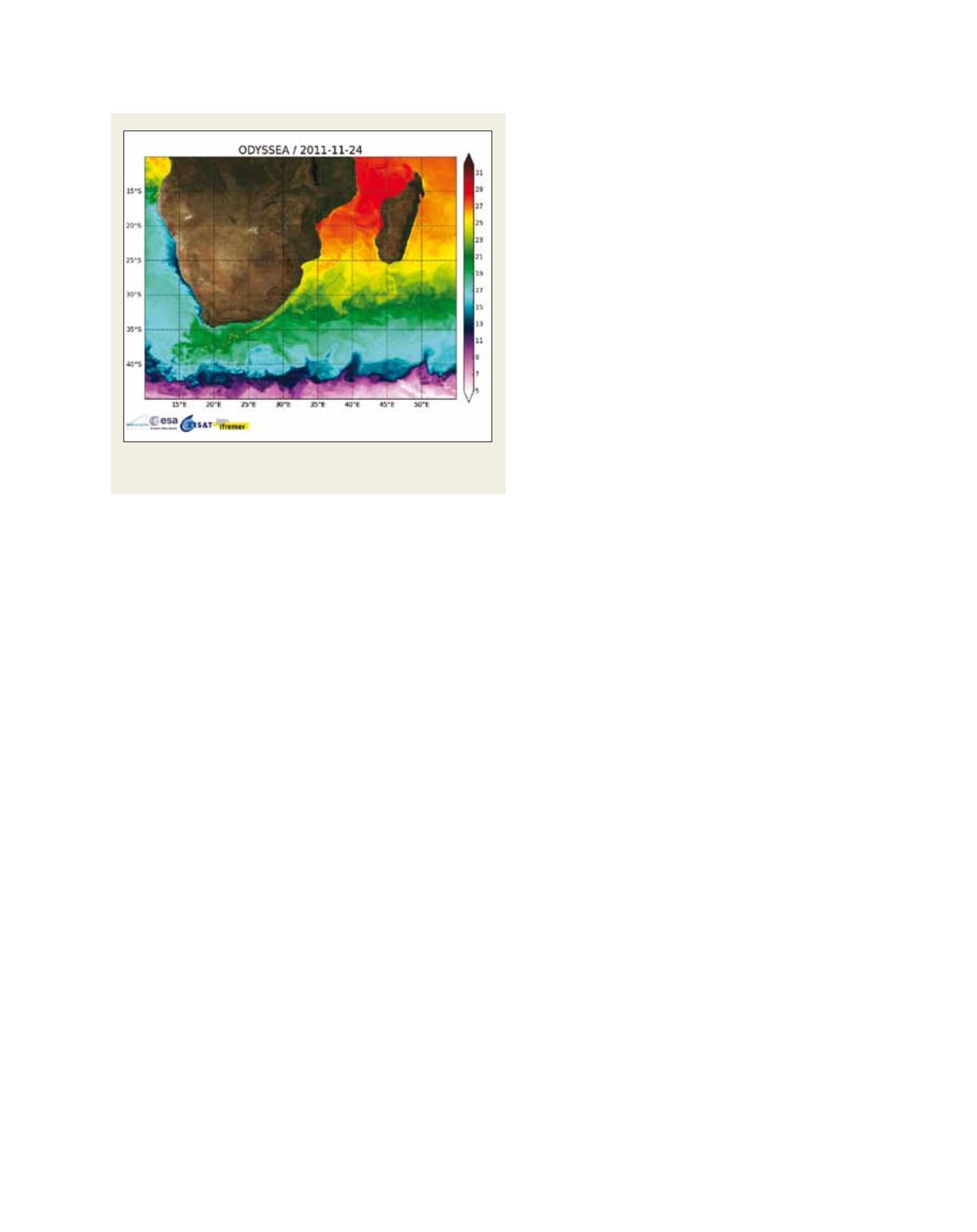

[
] 205
E
cosystems
modern technology, often never flown before, to close observation
gaps and deliver accurate and reliable data for measuring the pulse
of the planet.
With the help of new satellite systems such as the Sentinel
missions developed under the Global Monitoring for Environment
and Security (GMES) programme of the European Union and ESA,
and the exploitation of the infrastructure already in space, it is
possible to advance both scientific and political ambitions. Earth
observation is a perfect example to link research and technology
development with the care urgently needed to work towards a
sustainable and self-conscious future for all of us.
As important as satellites in space are, they nevertheless represent
only one part of the quest to better understand climate patterns.
Less spectacular but equally important is the use of many years of
archived data sets, their reprocessing with the newest scientific algo-
rithms, their comparison and their interpretation. Satellite data are
thus not used only once, but reprocessed time and again, integrated
into the newest scientific models and evaluated as part of crucial
long-time observations.
With its missions, ESA is at the forefront of Earth observation
and climate research worldwide. Yet the importance of global
observation for understanding climate change has also triggered
concerted action on the international scene. The Global Climate
Observing System (GCOS), in the context of the United Nations
Framework Convention on Climate Change (UNFCCC), defined a
set of Essential Climate Variables (ECVs) which will be systemati-
cally monitored in order to quantify the state of our climate in an
objective and effective way. In response, the ESA Climate Change
Initiative aims to “systematically generate, preserve and give access
to long-term data sets of the ECVs.”
The ESA Climate Change Initiative provides and uses climate data
records of ongoing and planned missions in Europe. The systematic
generation of relevant ECVs includes recalibration, periodic reproc-
essing, algorithm development, product generation and validation,
and quality assessment of climate records in the context
of climate models.
But the Climate Change Initiative goes beyond that,
introducing a feedback loop mechanism whereby new
user feedback and the latest scientific knowledge can
be easily integrated within each reprocessing phase.
A Scientific Advisory Group, involving world-leading
scientists representing key stakeholder organizations,
provides scientific guidance on the programme. This
allows optimal use of decades of space-borne, climate-
related data for the benefit of all of us.
The Climate Change Initiative has already enabled
ESA and European scientists to contribute signifi-
cantly to coordinated international action on climate
observations from space (GCOS, UNFCCC, the
Intergovernmental Panel on Climate Change). Work
has been initiated on 13 ECVs: cloud properties, green-
house gases, ozone, aerosol properties, sea surface
temperature, sea level, sea ice, ocean colour, glaciers
and ice caps, ice sheets, land cover, fire, and soil mois-
ture. Of particular merit is the interaction developed
between the various ECV teams to determine specific
user needs, including the involvement of user commu-
nities well beyond European climate research groups.
The ESA Climate Science Advisory Board recently
concluded that the Climate Change Initiative should
be seen as a critical beginning in laying the foundation
for long-term activity, spreading over several decades to
fulfil long-term and high quality observational records
required for use in climate research, modelling and
prediction.
Likewise, it is imperative to enable next-generation
missions. The ESA Earth Observation programmes are
well set to continue the heritage they have provided
in the past. Through the Earth Observation Envelope
Programme, ESA will develop and launch new cutting-
edge technology Earth Explorer missions and foster
scientific exploitation, application development and
the generation of new user communities. With GMES,
and in particular the launch of the first Sentinel
mission at the end of 2013, systematic, operational
Earth observation data provision will be ensured – for
decision-makers, service providers and scientists alike.
With the development of the newest generation meteor-
ology missions, MeteoSat Third Generation and MetOp
Second Generation, in cooperation with ESA’s partner
EUMETSAT, weather and climate monitoring from
space will be secured for decades to come.
The past years have shown more than ever the close
link between human dependence on our environment
– natural resources, climate, and space for living and
developing. Science has long since left the infamous ivory
tower. It has become a prerequisite for political action.
This moves satellites to the centre stage of interest.
Through its Earth observation missions, ESA is devel-
oping and operating climate-quality observing systems,
providing free access to the worldwide science commu-
nity and working with its partners to ensure long-term
observations of fundamental climate data records.
An example of daily monitoring services from space –
sea surface temperature around Southern Africa
Source: Medspiration, ESA
















